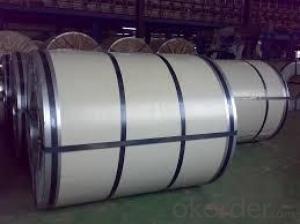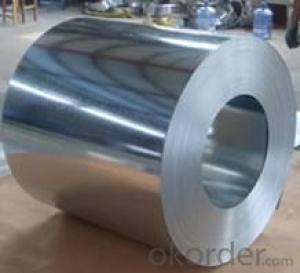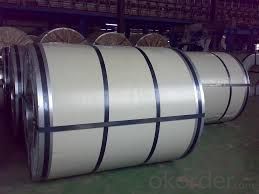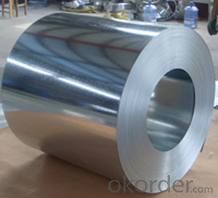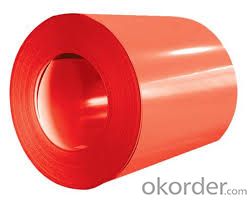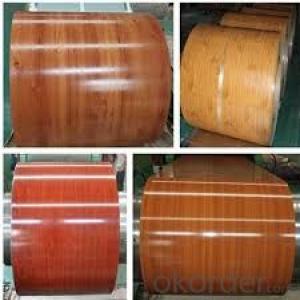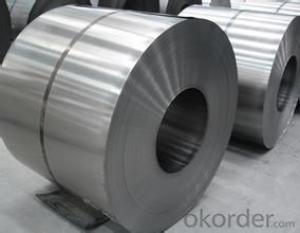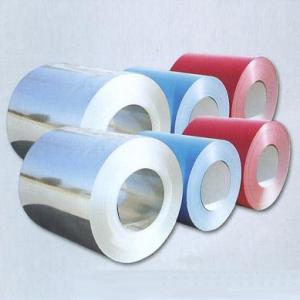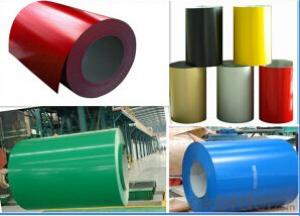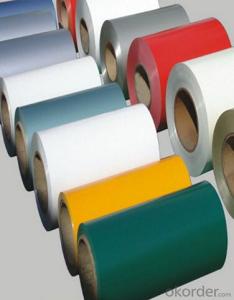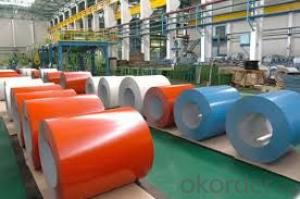Antioxidant Prepainted Steel Coil/PPGI-Prepainted Galvanized Steel/Color Coated Galvanized Steel
- Loading Port:
- Shanghai
- Payment Terms:
- TT OR LC
- Min Order Qty:
- 25 m.t.
- Supply Capability:
- 18000 m.t./month
OKorder Service Pledge
OKorder Financial Service
You Might Also Like
Product Description
Product Name: China PPGI manufacturer/PPGI MILL
PPGI coils
PPGI steel coils
PPGI galvanized coils
PPGI zinc coated coils
Pre-painted galvanized steel coils
Color coated steel coils
Color coated steel coils
Red color/blue color steel coils
Color coated PPGI FOR metal roof
DX51D color coated corten steel coil(PPGI)
Prime prepainted galvanized steel coil
White color prepainted steel coils
Color steel coil for roofing material
Dx51d+z prepainted steel coil
Colorful galvanized steel coil
Specifications:
Grades: Q195-Q235 and SPCC, SPCD, SPCE, SGCC (DX51D+Z) and SGCD (DX52D+Z)
Thickness: 0.13 to 2.0mm
Width: 600 to 1200mm or customized
Coil inner diameter: 508 to 610mm
Coil weight: Customized
Color: RAL
Surface protection: PE, PVDF, SMP and HDP
Surface treatment: Chromate, oil/un-oil, bright finish, spangle and anti-finger print
Standards: JIS G3302, JIS G3312 and ASTM A653M/A924M 1998
Zinc coating weight: 60 to 275G/M
Features:
Nice corrosion-resistant: Zinc layer provides nice protection of pre-painted galvanized steel sheet
High heat resistant: Reflective surface of material aids in efficiently reflecting sunlight away and turn reducing amount of heat transmitted, thermal reflectivity converts into energy-saving.
Coating adhesive force of color-coated sheet is strong, which keeps color and luster novel for long.
Widely used in such field as architecture, electrical home appliances, furniture, communal facilities, communications and transportation.
PPGI prepainted sheets and coils
Product thickness: 0.135 to 2.0mm
Product width: 760 to 1250mm
Coil weight: 5 to 10 metric tons
Coil ID: 508mm
Coil OD: Max 1500mm
Coating type: PE
Standards: JIS G 3312, ASTM A755M, GB/T 12754, Q/CHG 2-2003, EN 10143, DIN 17162
Material: TDC51D, AZ150, SGCC, CGCC, SPCC195L, TSGCC, CCGI, Q195-Q235, SPCD, SPCE
Color: RAL
Zinc coating: 60 to 275G/M²
Application: Construction, hardware, home appliances, interior decoration and more.
| NAME | PPGI | GALVANIZED | GALVALUME/ALUZINC | |
| CERTIFICATE | ISO9001:2008 | |||
| STANDARD | EN10142 JIS G3302 GB/T-12754-2006 | ASTM A653 JIS G3302 SGCC/SGCH GB/T2518 European Standard | ASTM A792 JIS G3321 JIS G3317 | |
| GRADE | CGCC CGCH CGCD1-CGCD3 CGC340-CGC570 GRADE | SS GRADE33-80 SGCC SGCH SGCD1-SGCD3 SGC340-SGC570 SGCC DX51D | GRADE33-80 SGLCC SGLCD SGLCDD SGLC400-SGLC570 SZACC SZACH SZAC340R | |
| MODEL NO | 0.16MM-1.5MM*1250MM OR UNDER | (0.12-1.5)*1250MM OR UNDER | 0.16MM-1.5MM*1250MM OR UNDER | |
| TYPE | Steel coil Steel sheets/plates Corrugated steel sheets/plates | Steel coil Steel sheets/plates Corrugated steel sheets/plates | Steel coil Steel sheets/plates Corrugated steel sheets/plates | |
| TECHNIQUE | Hot rolled-cold rolled -galvalume /galvanized -PPGI/PPGL | Hot rolled-cold rolled - galvanized | Hot rolled-cold rolled -galvalume /Aluzinc | |
| SURFACE TREATMENT | Mini/regular/big/zero spangle, Chromate treatment /chromate-free treatment /untreated unoile/oiled, TENSION LEVELLERT SKIN PASS anti-fingerprint/un-anti-fingerprint, Coating,color | Mini/regular/big/zero spangle, Chromate treatment /chromate-free treatment /untreated unoile/oiled, TENSION LEVELLERT SKIN PASS anti-fingerprint/un-anti-fingerprint, Coating | ||
| APPLICATION | Structural use ,roofing, commercial use, household appliance, industry, family | |||
| SPECIAL APPLICATION | Wear resistant steel, high- strength - steel plate | |||
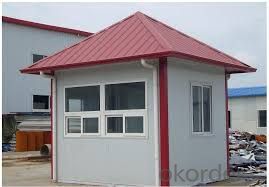
Q&A What is your advantage?
ANSWER:24 hour quick response /Customer oriented/ Credit foremost/ Top quality Excellent
- Q: How do steel coils impact the environment?
- Steel coils can have significant environmental impacts throughout their lifecycle. The production of steel coils involves extracting and processing raw materials, which can result in deforestation, habitat destruction, and air and water pollution. Additionally, the energy-intensive manufacturing process contributes to greenhouse gas emissions. Improper disposal or recycling of steel coils can further exacerbate environmental harm. Overall, the environmental impact of steel coils underscores the need for sustainable production practices and responsible end-of-life management.
- Q: explain what happen if carbon steel is exposed to an oxygen rich atmosphere at elevated temperature inside a furnace.
- Assuming the steel isn't actually melted, two things will happen. First, a layer of iron(ii) oxide, FeO will slowly develop on the surface, getting thicker over time. This layer is usually poorly bonded to the metal surface, it tends to flake off, exposing fresh metal. This is known as mill scale, it's also known as wustite which is the mineral term. Second, the surface of the steel will become decarburized, essentially becoming pure iron, not steel. The depth of the decarburized layer depends on the temperature, time, and the diffusivity of carbon in the steel at the given temp. This has some implications to engineering, in hot-rolling or forging of steel shapes for example. It's often the case that the stress and strain in a material is greatest at or near the surface. Therefore the weakened, decarburized layer at the surface may have a much greater detrimental effect on the steel's performance than might be expected. In a more specific example, die and tool steels depend on their carbon content for their strength and wear resistance, Therefore if such steels are heated in an oxidzing atmosphere, wear resistance is totally destroyed: The thin decarburized iron layer will be extremely soft and malleable.
- Q: How are steel coils used in the production of metal storage systems?
- Steel coils are typically used as a primary raw material in the production of metal storage systems. These coils are unrolled and processed through various machines and equipment to form different components such as shelves, frames, and supports. The steel coils are cut, shaped, welded, and coated to ensure durability and strength. Additionally, the coils can also be used to create interlocking panels or sheets that form the walls and roofs of the storage systems. Overall, steel coils play a crucial role in the manufacturing process, providing the necessary material for the construction and assembly of metal storage systems.
- Q: What is the process of galvanizing steel coils?
- The process of galvanizing steel coils involves immersing them in a bath of molten zinc to create a protective coating. The coils are first cleaned and then passed through a series of chemical baths to prepare the surface for galvanization. Afterward, they are dipped into the molten zinc, which bonds to the steel to form a corrosion-resistant layer. Once coated, the coils are cooled, inspected, and prepared for shipment or further processing.
- Q: What are the different certifications required for steel coil manufacturers?
- Some of the different certifications required for steel coil manufacturers include ISO 9001, ISO 14001, OHSAS 18001, and various industry-specific certifications such as the American Society for Testing and Materials (ASTM) certifications. These certifications ensure that the steel coil manufacturers meet quality, environmental, and occupational health and safety standards.
- Q: How are steel coils used in the production of containers?
- Steel coils are used in the production of containers as they are the primary material for manufacturing container bodies. These coils are shaped and welded into the desired container shape, providing strength and durability to the final product.
- Q: What are the different methods of surface cleaning for steel coils?
- There are several different methods available for surface cleaning of steel coils. The choice of method depends on the specific requirements and conditions. 1. Mechanical Cleaning: This method involves the use of mechanical tools such as wire brushes, sanding discs, or abrasive pads to physically remove dirt, rust, or other contaminants from the surface of the steel coils. It is commonly used for light cleaning and can be done manually or with the help of automated equipment. 2. Chemical Cleaning: Chemical cleaning involves the use of various cleaning agents or solvents to dissolve or loosen contaminants from the surface of steel coils. This method is effective for removing oil, grease, or stubborn dirt. Different chemicals can be used depending on the type of contaminants and the desired level of cleaning. It is important to follow safety guidelines and use appropriate protective equipment when using chemical cleaners. 3. Power Washing: Power washing or pressure washing utilizes a high-pressure water jet to remove loose particles, dirt, or contaminants from the surface of steel coils. This method is effective for large-scale cleaning and can be combined with chemical cleaners for enhanced results. It is important to adjust the water pressure according to the type of surface and use appropriate nozzles to prevent damage. 4. Pickling: Pickling is a chemical cleaning method that involves the immersion of steel coils in an acidic solution, typically a mixture of hydrochloric acid and sulfuric acid. This process removes scale, oxides, and other impurities from the surface of the steel. Pickling is commonly used for heavy-duty cleaning and preparation of steel coils before further processing or coating. 5. Electrolytic Cleaning: Electrolytic cleaning utilizes an electric current to remove contaminants from the surface of steel coils. The coils are immersed in an electrolyte solution, and the application of a direct current causes the contaminants to dissolve or dislodge from the surface. This method is particularly effective for removing rust or corrosion and can be used in conjunction with other cleaning methods. It is important to consider factors such as the type and condition of the steel coils, the level of cleanliness required, and any specific industry standards or regulations when choosing the appropriate method of surface cleaning. Regular maintenance and cleaning of steel coils are essential to ensure their longevity, performance, and resistance to corrosion.
- Q: What are the common coil processing equipment used in the industry?
- Some common coil processing equipment used in the industry include coil slitting machines, coil winding machines, coil straighteners, coil feeders, and coil cradles. These machines are used to cut, shape, and feed metal coils in various manufacturing processes.
- Q: What are the guidelines for handling damaged steel coils?
- The guidelines for handling damaged steel coils typically involve assessing the extent of the damage, ensuring proper safety precautions are in place, and following industry best practices for handling and storing damaged coils. It is important to inspect the damaged coils for any potential hazards, such as sharp edges or protruding objects, and to use appropriate lifting equipment and protective gear when moving or transporting them. Additionally, damaged coils should be segregated from undamaged ones to prevent further deterioration and potential safety risks.
- Q: What are the common defects found in uncoiled steel coils?
- Some common defects found in uncoiled steel coils include surface defects such as scratches, dents, or pits, edge defects like burrs or slivers, and dimensional defects such as variations in thickness or width. Other defects may include coil set (curvature), coil breaks (cracks or fractures), or oil stains. These defects can affect the quality and performance of the steel and may require further processing or inspection before use.
Send your message to us
Antioxidant Prepainted Steel Coil/PPGI-Prepainted Galvanized Steel/Color Coated Galvanized Steel
- Loading Port:
- Shanghai
- Payment Terms:
- TT OR LC
- Min Order Qty:
- 25 m.t.
- Supply Capability:
- 18000 m.t./month
OKorder Service Pledge
OKorder Financial Service
Similar products
Hot products
Hot Searches
Related keywords
